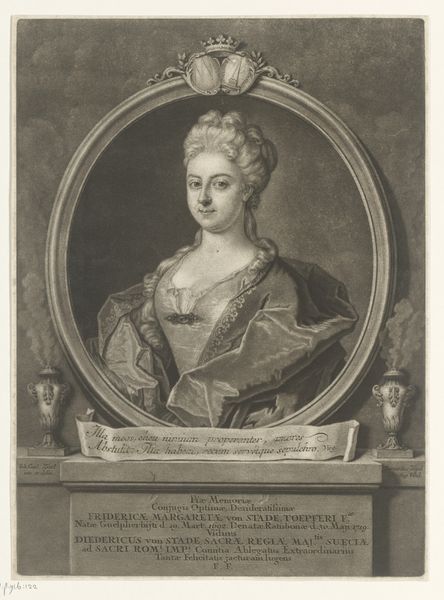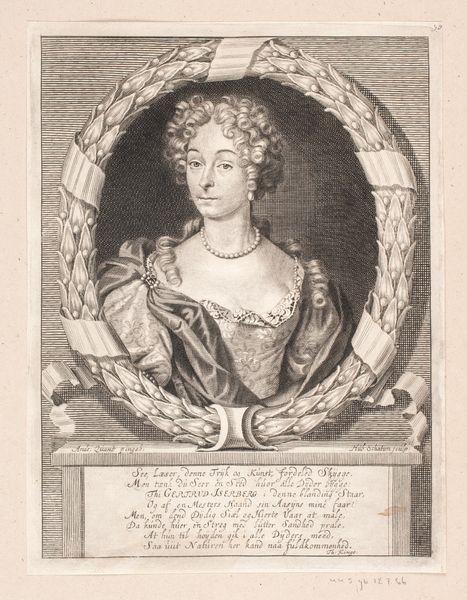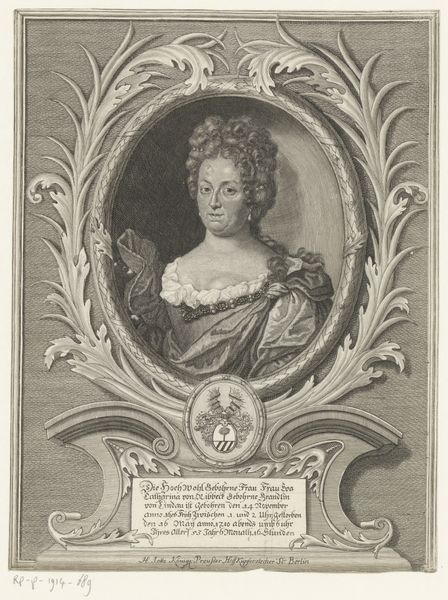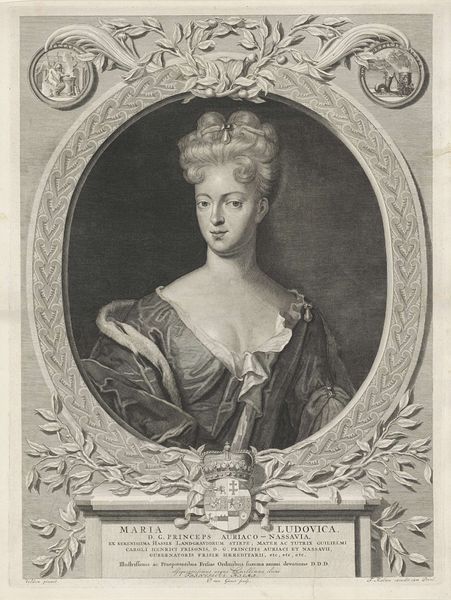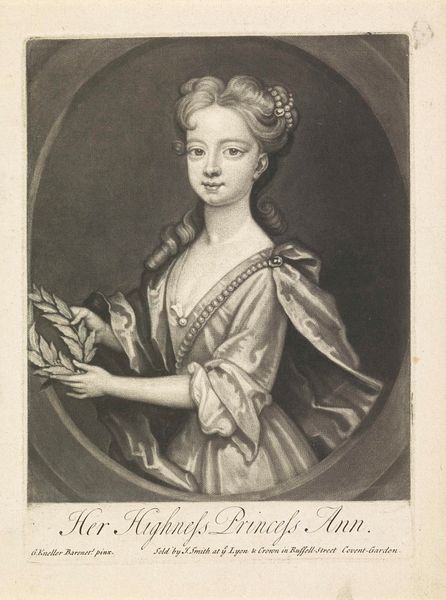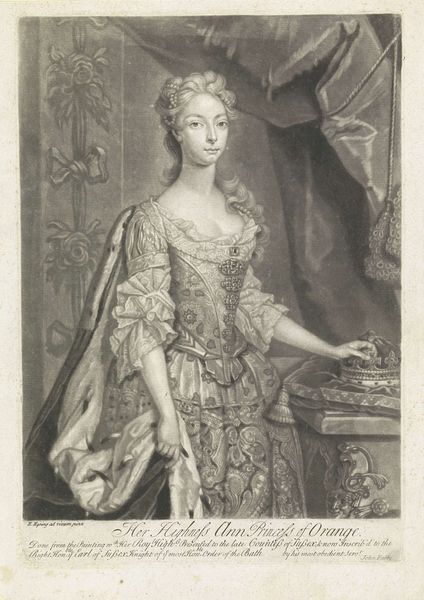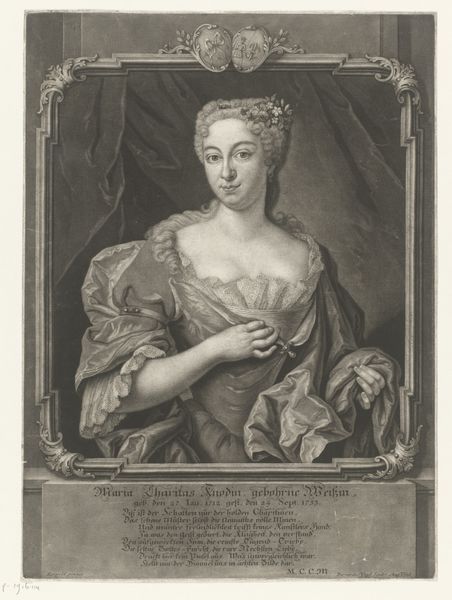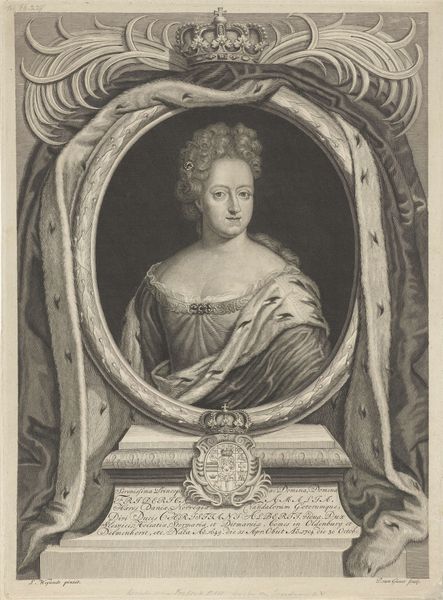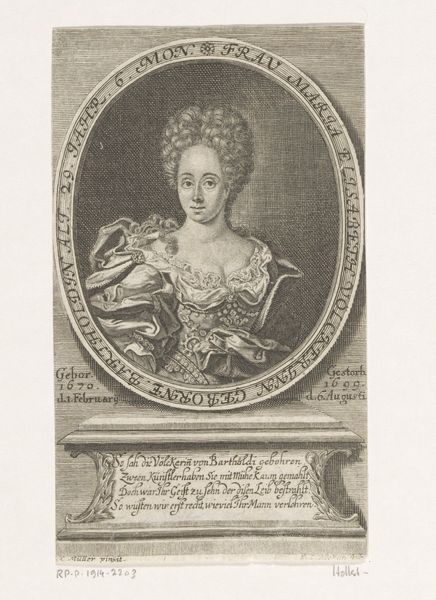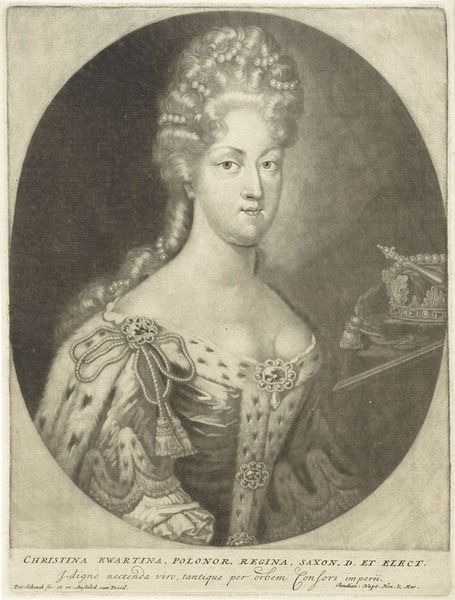
print, engraving
#
portrait
#
baroque
# print
#
figuration
#
line
#
history-painting
#
engraving
Dimensions: height 162 mm, width 110 mm
Copyright: Rijks Museum: Open Domain
Curator: This engraving from between 1712 and 1744 is a portrait of Anna van Hannover, Princess of Orange-Nassau. Note the linear detail rendered by the artist. Editor: Yes, a crisp image, framed. The subject’s gaze is quite arresting, though her face appears somewhat...flat? Is that intentional? Curator: In the Baroque style, there’s often a focus on idealization, especially when depicting nobility. The lack of deep shadow flattens the features, yes, but serves to elevate her, presenting a perfect image of royal authority. And her family's crest and crown at the base underscore that. Editor: Interesting. I was immediately drawn to the elaborate frame and base, the oval with its layered border. It gives the central figure a stage, almost. What do those animals flanking the crest signify? Curator: Those are symbolic of her lineage—the lion and unicorn represent specific familial lines. The imagery surrounding the portrait functions almost as a form of visual biography. Editor: So the lion, traditionally linked to strength and royalty, signifies... what exactly in Anna's family? Curator: Likely alluding to either courage or dominion over territory. The symbols in heraldry often connect to historical achievements and land ownership, further linking the portrayed individual to her noble history. Editor: What strikes me further is how the inscription adds to that stage presence: the typography itself complements the imagery, further glorifying its subject. It reminds us this isn't merely a likeness but an assertion of status, lineage, and destiny. Curator: Indeed. The visual program presents Anna van Hannover as a critical figure in Dutch history. A cultural memory carefully constructed through image and text. Editor: I see how the stylistic features become more meaningful when understood within this symbolic, cultural context. Thanks for sharing your perspective. Curator: My pleasure. Analyzing visual motifs opens another doorway to historical and psychological interpretations, highlighting continuities of power dynamics over time.
Comments
No comments
Be the first to comment and join the conversation on the ultimate creative platform.
